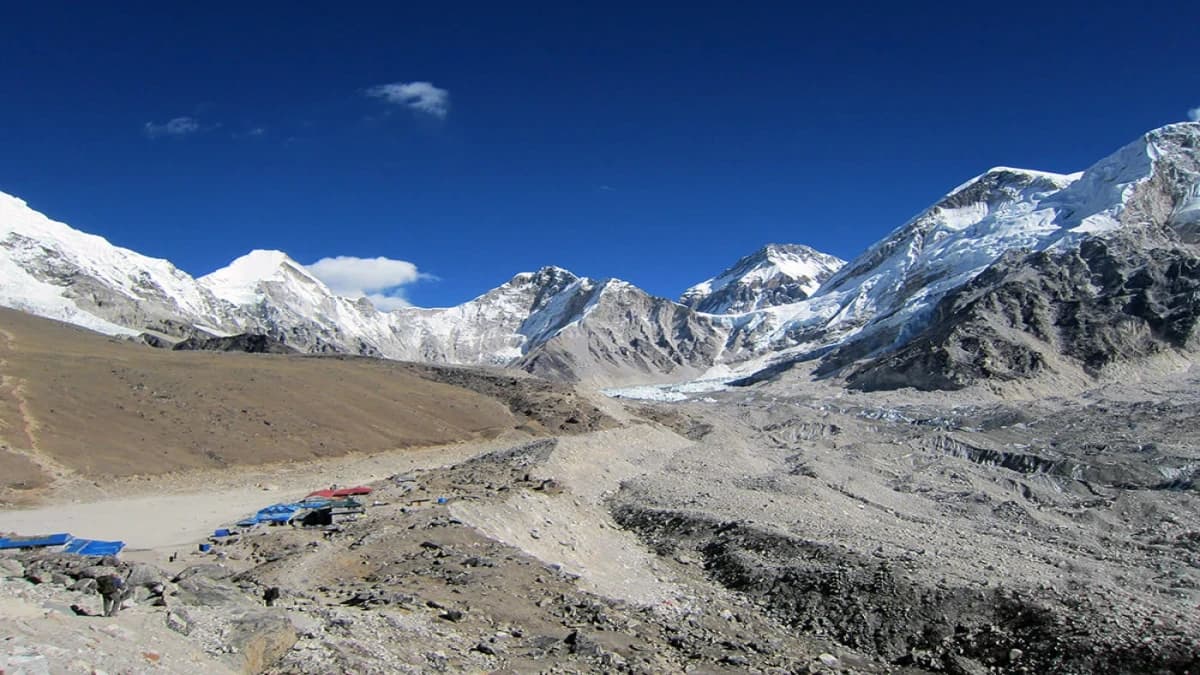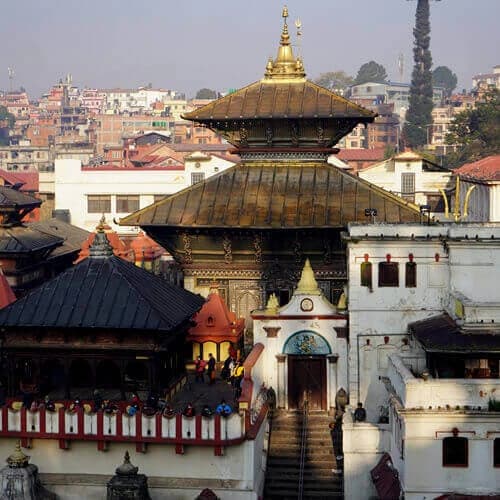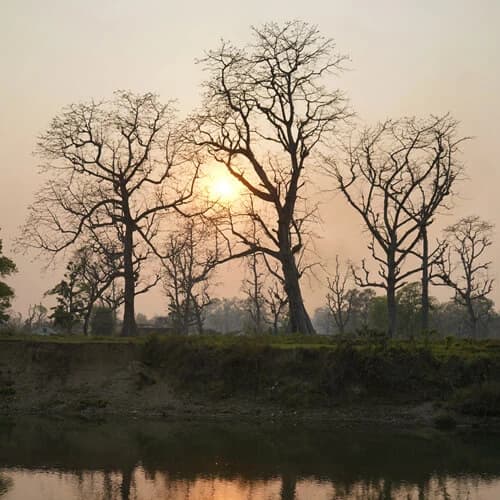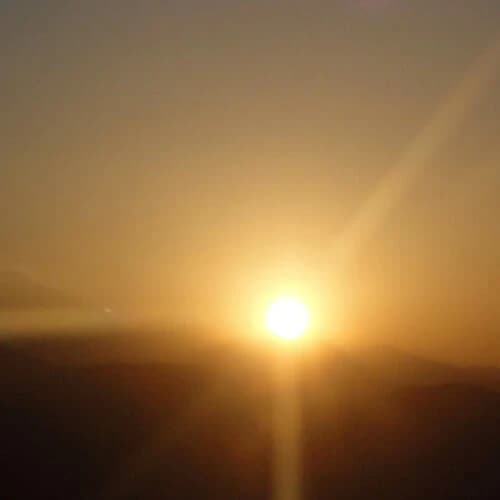Essential Details on Flights to Lukla
Here's something important to know before you book: Flights to Lukla no longer always depart from Kathmandu.
During the busy trekking seasons, which are spring (March to May) and autumn (September to November), flights to Lukla are rerouted from Ramechhap (also known as Manthali Airport) instead of Kathmandu. This is due to heavy air traffic at Tribhuvan International Airport.
Ramechhap is approximately 5 to 6 hours by road from Kathmandu, which adds some travel time to your trip. Most trekkers drive to Ramechhap the day before, but if you're short on time, you can also leave around 4 a.m. and take a private vehicle that gets you there in time for your morning flight. We include all these logistics in your itinerary, so you're never left wondering.
Note: If you're traveling in off-season months—winter (December to February) or monsoon (June to August)—flights to Lukla usually still operate from Kathmandu.
Best Time for the Overnight Everest Base Camp Experience
The ideal month and season for the EBC Overnight trek depends on what kind of experience you're looking for, as each of Nepal's seasons has its distinctive charm and aesthetic. Generally, spring and autumn are considered the best times for trekking due to their optimal temperatures and weather conditions.
- Spring (March, April, May)
Spring is the only season when the overnight stay at Everest Base Camp aligns with the Everest expedition window. April and May are especially lively, with the base camp bustling with climbers preparing for summit attempts. You'll see rows of bright tents pitched across the glacier, meet expedition teams, and feel part of the mountaineering spirit. Most days are typically mild and pleasant, but as you ascend, temperatures begin to drop significantly. The temperatures at higher altitudes, especially around Gorak Shep and EBC, can get frosty, and well below freezing. Still, the trail is vibrant with blooming rhododendrons and clear morning skies, perfect for scenic views and photography.
- Autumn ( September, October, November)
Autumn is another popular trekking season, though it doesn't offer the overnight EBC stay with expedition teams. That said, the mountain views are stunning. The air is crisp and dry, offering crystal-clear skies, especially in the mornings. Daytime temperatures are warmer at lower altitudes (up to 25°C in places like Lukla or Phakding), but at higher elevations, it can drop to -10°C at night. The trail tends to be quieter post-monsoon, with stable conditions, making it ideal for trekkers who prefer solitude, less trail traffic, and fewer weather surprises.
Note: In both seasons, early mornings are best for mountain views, while clouds tend to gather in the afternoon and clear again by evening. Weather can shift quickly, so it's always good to be prepared for sun, snow, or rain—even on the same day.
Is this a Suitable Trek for You?
The Everest overnight adventure is regarded as moderate to challenging, depending on your fitness, health, and determination. Additionally, you don't need previous high-altitude experience, but it won't be a breeze; travel experience will also be challenging. You can expect long days of trekking through rugged terrain, steep paths, and elevation gains up to 5,364 m.
Think of it as a serious adventure, perfect for nature lovers and thrill-seekers seeking more than just pretty photos. You'll walk through several Sherpa villages, monasteries, and shrines, immersing yourself in the rich culture of the Khumbu Valley. Ideal trekkers are individuals capable of walking 5 to 8 hours a day.
You must focus on enhancing your cardio and stamina to cover distances without overexertion. Despite the challenging nature of the trek, it remains achievable with a proper mindset, adequate preparation, and support from our experienced guides. You'll find yourself trekking up to Kala Patthar and watching Everest's summit emerge above the horizon.
Everest Base Camp Overnight Trek Difficulty
The EBC Overnight Trek is classified as challenging due to its high altitude, dramatic terrain, unstable weather conditions, and risk of altitude sickness. Although the trek route is generally well-established, often used by locals and yaks, the real test lies in the elevation gain. You'll be trekking to heights of over 5,500 meters, with two nights spent sleeping above 5,000 meters at Gorak Shep and Everest Base Camp itself.
This kind of altitude puts pressure on your body, and even fit trekkers can experience symptoms of altitude sickness if not properly acclimatized. On most days, expect to walk 6 to 7 hours on average, carrying a daypack with essentials like water, snacks, warm layers, and personal items. You don't need to be a mountaineer, but a good level of fitness, some prior trekking experience, and mental readiness for the cold, thin air go a long way.
Preparation for a successful Trek
Before you start training your body, it's essential to prepare your mind. The trek to Everest Base Camp is more than just taking in the stunning views—it's a severe test of patience and stamina. You'll be dealing with things like unpredictable weather, flight delays, limited comforts, and long days of hiking at high altitude. That's not always easy.
One of the best ways to mentally prepare is to hear from people who've done it. Read their blogs, watch some raw and honest YouTube vlogs—not just the highlight reels. You'll learn about the real ups and downs, and that helps you go in with the right expectations. Mentally, you need to remain flexible and keep a positive mindset, especially when things don't go as planned. Remind yourself why you signed up for this. Keeping your goal in sight will motivate you to push forward on the tough days.
Physically, you need to build stamina and strength. Start at least 6 to 8 weeks before your trek. Go for regular walks—begin with an hour and gradually work up to 5–6 hours, incorporating uphill climbs whenever possible. Walking with a loaded backpack (around 5–7 kg) helps you get used to the weight you'll carry on the trail. Combine cardio exercises, such as cycling, swimming, or running, with leg and core workouts, including squats, lunges, and planks.
Note: Stretching is often overlooked, but it's crucial; tight muscles can turn into injury in the mountains. Train and jog in your trekking boots to get used to them and avoid blisters. Eat well, hydrate daily, and aim for quality sleep in the weeks leading up to your departure.
Safety & Acclimatization Measures During the Trek
Your well-being on the Everest Base Camp trek is something we take very seriously; it's central to everything we do. From the moment your boots hit the trail, every step of your journey is carefully planned with your welfare in mind.
- Our specially crafted itinerary includes built-in acclimatization days and shorter walking hours, allowing your body the time it needs to adjust naturally. Our guides are trained in AMS (Acute Mountain Sickness) protocols. They monitor your oxygen levels using medical-grade oximeters and carry a complete first aid kit as well as supplementary oxygen for emergencies.
- With a high guide-to-trekker ratio—typically 1:3—you'll receive personal care and attention throughout the trip. Our team comprises seasoned professionals, many of whom grew up in the very mountains we now call home. They understand the terrain, the people, and how your body responds to altitude, especially when it's your first time up here.
Note: We have contingency plans in place to address emerging situations, including helicopter evacuation options and flexible itineraries, as well as adjustments to ensure your safety without disrupting your experience.
Passport, Visa, and Entry Requirements
It is crucial to ensure your passport is valid for at least six months beyond your intended departure date before heading off on your trek to Everest Base Camp or anywhere in Nepal. This is a standard entry requirement for all foreign nationals.
Obtaining a visa for Nepal is a relatively straightforward process, and most foreign nationals can get their visa upon arrival at Tribhuvan International Airport in Kathmandu. If you're entering by land (via India or China), you can also obtain your visa at official border entry points. Alternatively, you can get your visa in advance through a Nepalese embassy, consulate, or diplomatic mission near you.
The visa fee depends on the duration of your stay:
- 15-day multiple entry: USD 30
- 30-day multiple entry: USD 50
- 90-day multiple entry: USD 125
All fees must be paid in a convertible currency and are subject to change. Therefore, it's advisable to carry cash and check the latest rates before traveling.
Pro tip: Although the information we have is accurate as of now, visa rules can change depending on your nationality and transit routes. We strongly advise you to check the visa requirements before embarking on the EBC trek.
Please note that, although we've done our best to provide up-to-date information and guidance, you are ultimately responsible for ensuring that your visa and passport are in order and valid.
How Your Trek Supports Sustainable Tourism in Nepal
We’re passionate about sustainable travel, and our Everest Base Camp overnight trek shows just how seriously we take it:
- Zero-waste mindset: We follow a strict "pack‑in, pack‑out" policy—trekkers carry all their trash, including both biodegradable and non-biodegradable waste. We've eliminated single-use plastics and disposable packaging from our operations.
- Eco-camp setups: Instead of using firewood, we utilize gas or kerosene cooking systems, and we partner with lodges and camps that recycle, compost, and employ solar or energy-efficient lighting, thereby preserving fragile forest ecosystems.
- Trail protection: We stick strictly to designated routes to prevent erosion and protect native vegetation. Additionally, we offer biodegradable soap and promote water-saving habits during high-altitude hiking.
- Community First: We hire local Sherpa guides and porters at fair wages, support village-run teahouses, and channel a portion of our proceeds into water, sanitation, and heritage projects, such as the successful Tengboche Development Project.
- Hands‑on clean‑ups: We organize trekker‑led pickups and even support clean‑up initiatives (like those by Eco Everest and SPCC’s “Carry Me Back” program) to bring down bottles, oxygen canisters, and other trail debris.
Want to customize this trip?
If you'd like to make any changes, just let us know. Want to add the Gokyo Lakes for those dreamy turquoise views? Or consider taking on something more challenging, such as Island Peak or Lobuche East. That's all possible.
Not too keen on walking back down? No problem—we can arrange a helicopter flight from base camp to Kathmandu for a more relaxed and scenic finish.
Whatever your preferences, we're happy to tailor the itinerary to suit your interests and comfort. Just reach out, we'll plan the journey around what matters most to you.






